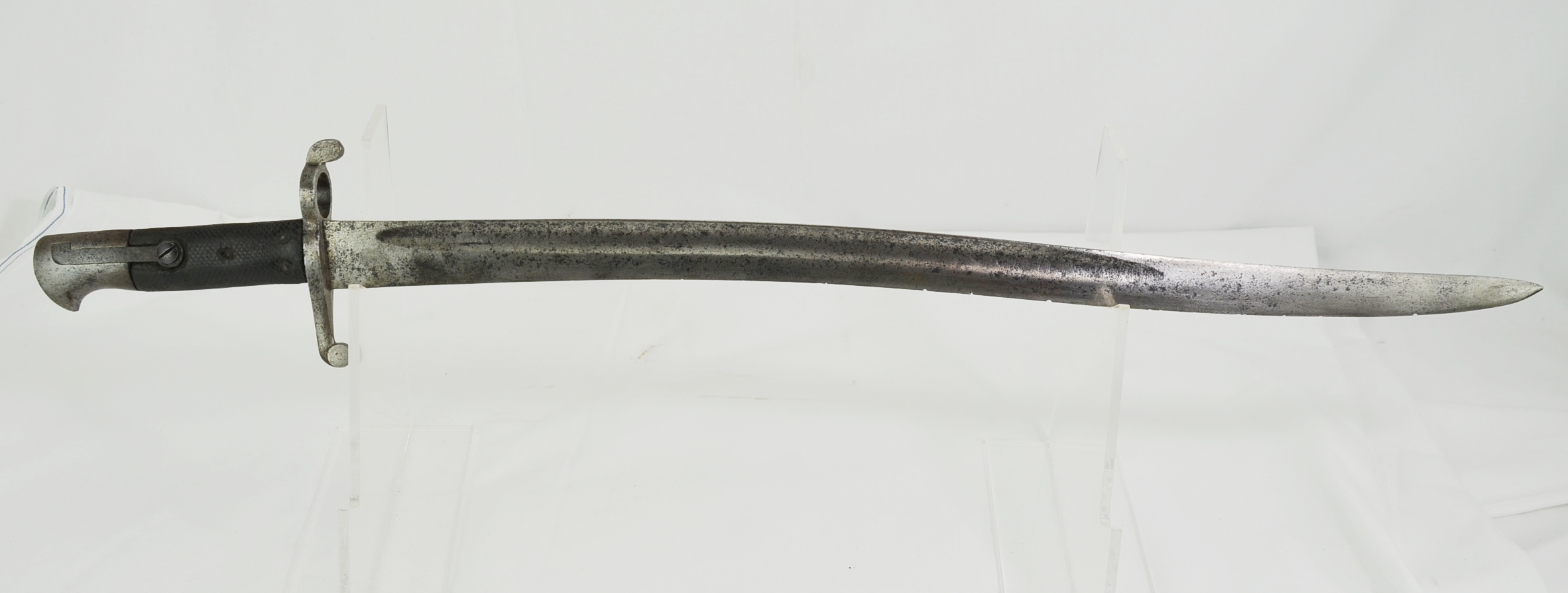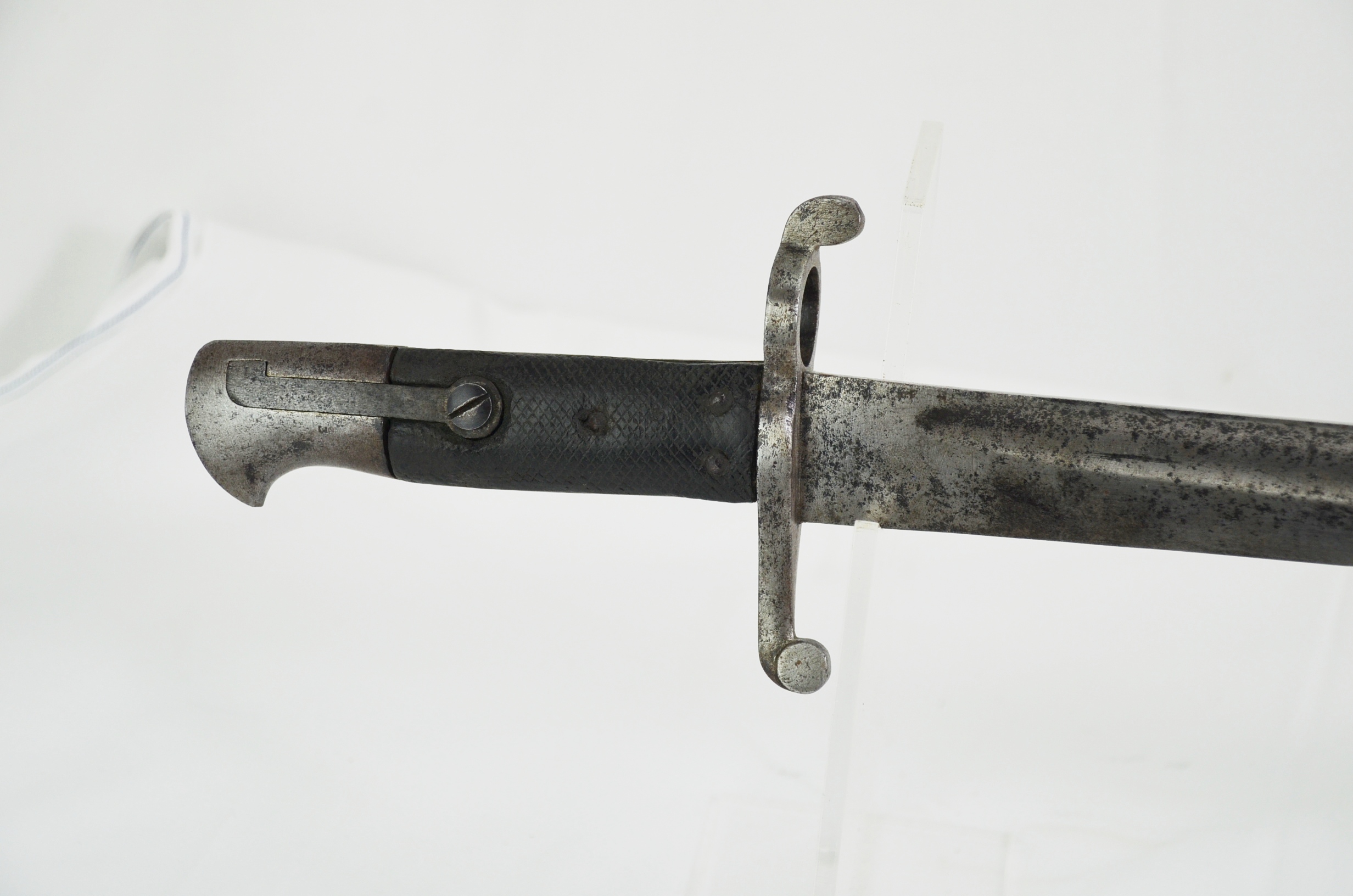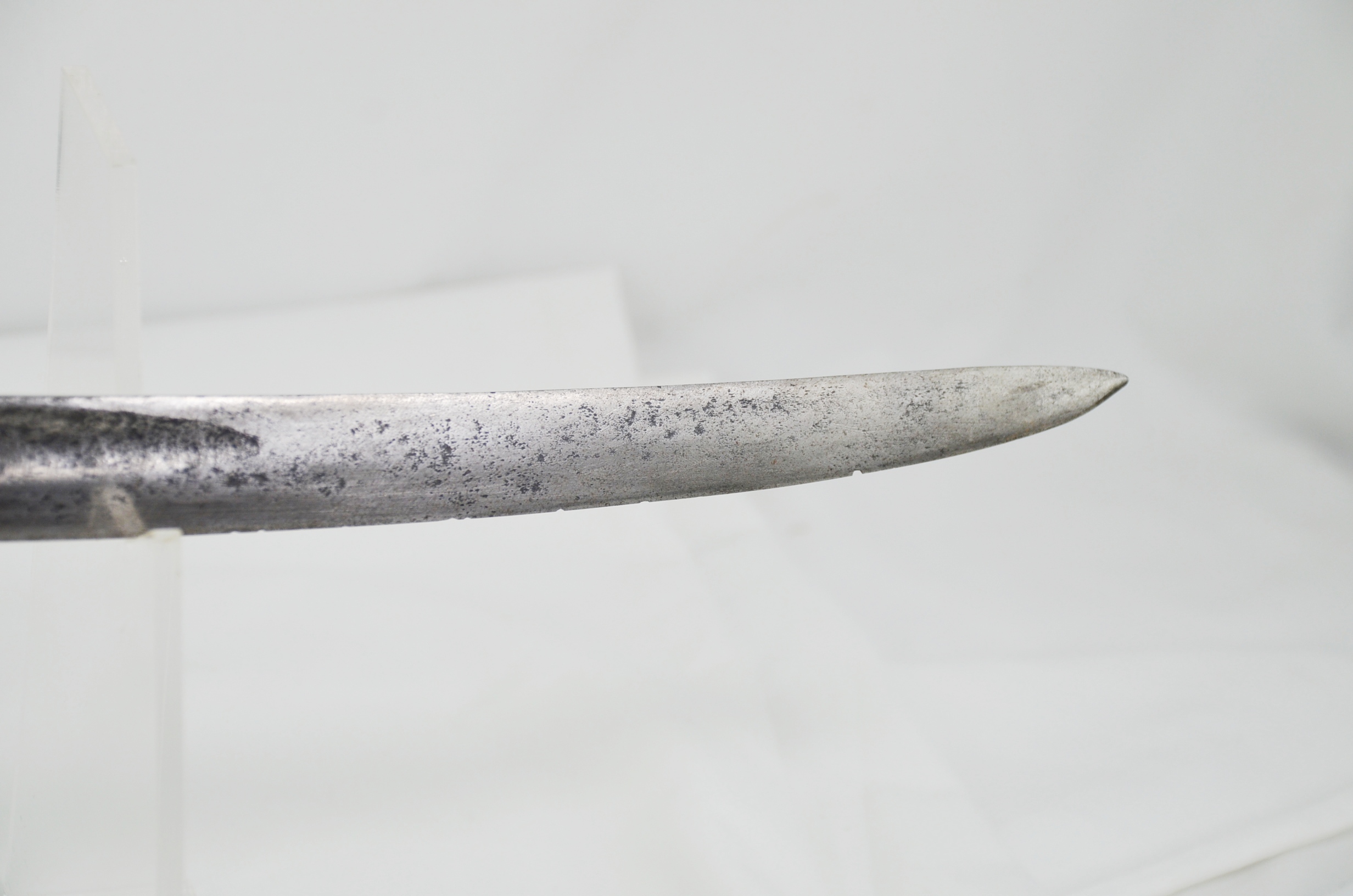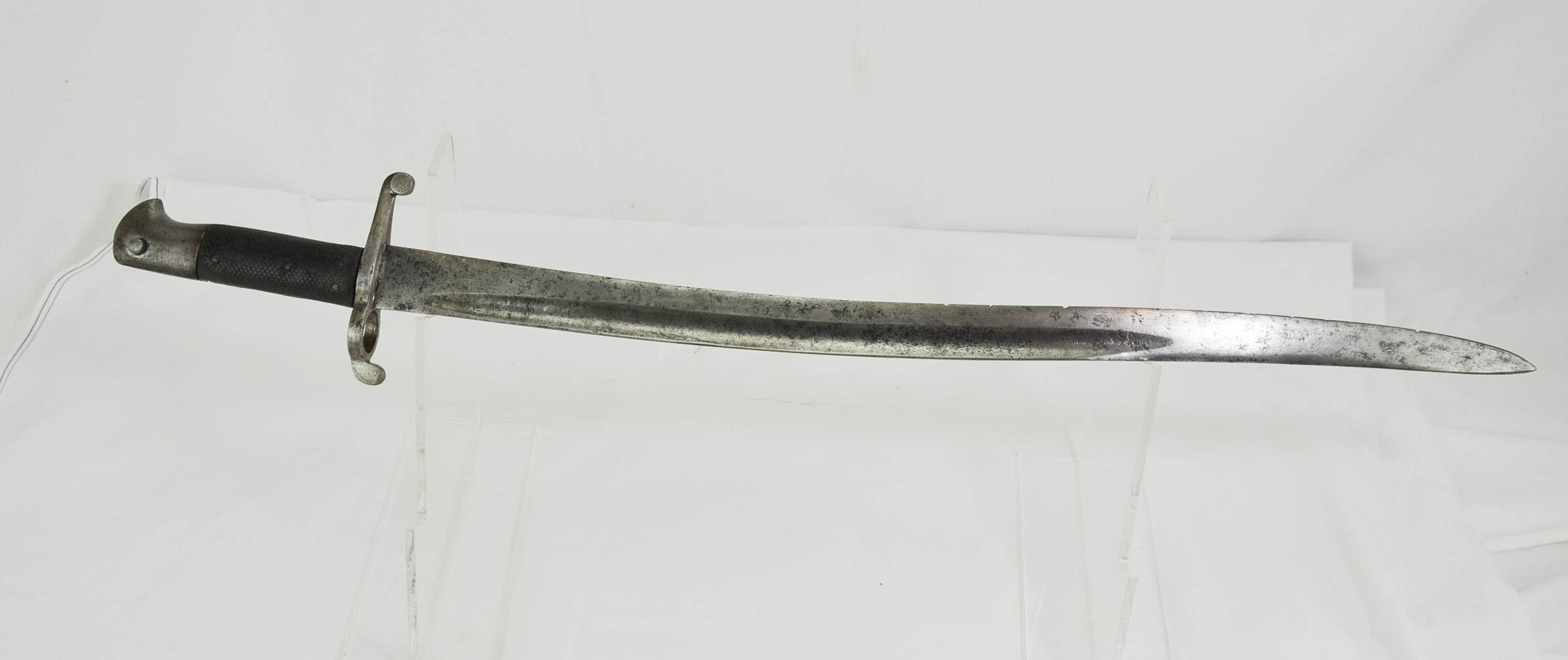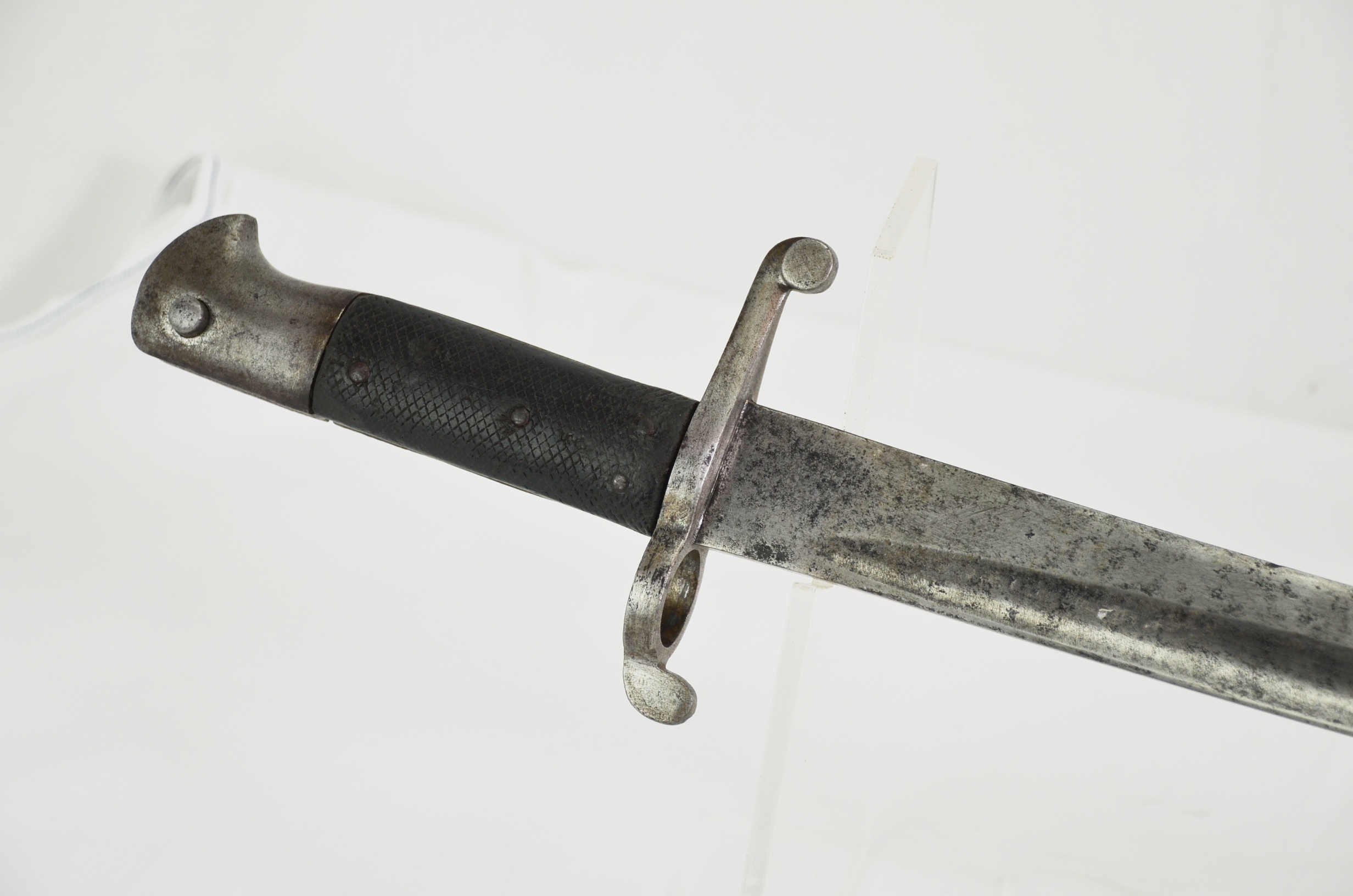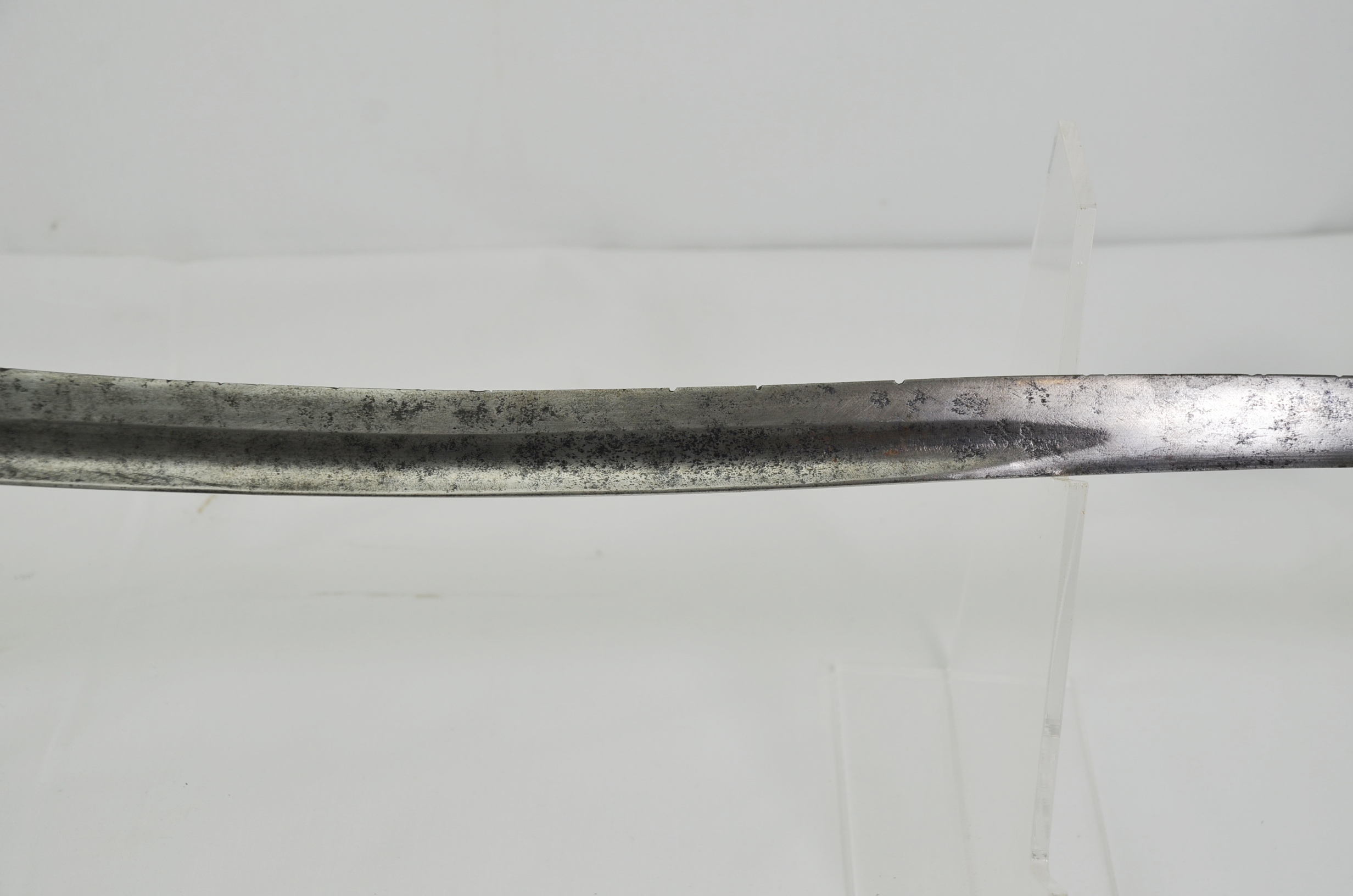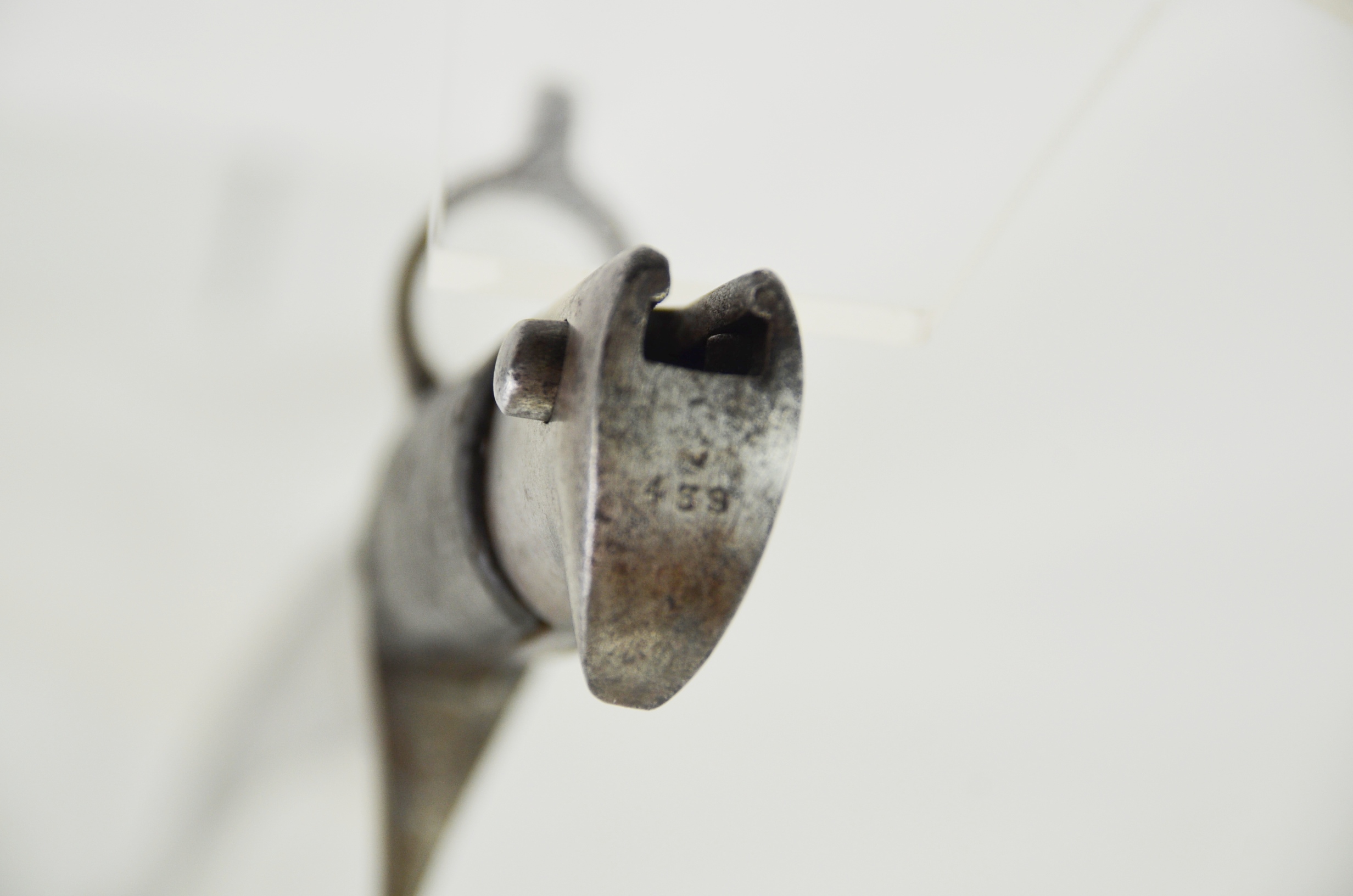~ British 1860 Pattern Snider Yataghan Bayonet ~
The Pattern 1860 Yataghan sword bayonet was adapted for the Snider as at the time, there were no approved, standard bayonets for them. The Yataghan was standard issue to NCO’s and rifle regiments.
*Condition*
This sword bayonet is in good condition and shows signs of its age and usage. The blade is pitted in areas and has small chips in the blade edge. The grip is still strong with some minor wear and the button works as it should. Please see pictures for more detail as they form part of our condition report.
The British 1860 Pattern Snider Yataghan Bayonet is a distinctive and historical weapon that was designed for use with the British military’s Snider-Enfield rifles, specifically the Pattern 1853 and later the Snider-Enfield conversions. The bayonet is named “Yataghan” due to its unique blade shape, reminiscent of the traditional Turkish yataghan sword, a type of curved blade.
Description:
Blade:
The blade of the 1860 Pattern Yataghan bayonet is approximately 22.8 inches (about 580 mm) long and features a pronounced curve, similar to a sword, which gives it the “yataghan” designation.
The blade has a fullered design (a groove running along part of the blade’s length) which was intended to reduce weight without compromising strength.
The edge of the blade is single-edged, with the back edge being thickened for extra durability.
Hilt and Guard:
The hilt of the bayonet is made of brass and features a crossguard with a hooked quillon on one side, which was meant to trap or deflect an opponent’s blade.
The grip is typically ribbed, providing a secure hold, and is often fitted with two-piece wooden scales attached by rivets.
The bayonet also has a steel pommel with a locking mechanism that securely attaches it to the rifle’s muzzle.
Scabbard:
The bayonet was issued with a leather scabbard featuring brass fittings. The scabbard had a brass locket at the throat and a chape at the tip to protect the blade.
History:
Introduction and Use:
The 1860 Pattern bayonet was introduced as part of the British Army’s efforts to modernize its weapons during the mid-19th century. It was designed for use with the Pattern


